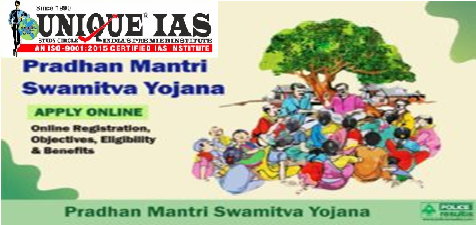INTERNAL SECURITY
Insurgency in North East India
North Eastern states are witnessing insurgency by multiple groups since the 1950’s . These states are connected to the rest of India by the Siliguri Corridor, a strip of land as narrow as 14.29 miles (23.00 km) wide. Now the only state where a prominent insurgency exist is Manipur.
Demands-
Some groups call for a
-Separate state, others for
-Regional autonomy while some extreme groups demand
-Complete independence.
Decline in Insurgency-
In recent years, insurgency in the region has seen a rapid decline, with a 70% reduction in insurgency incidents and an 80% drop in civilian deaths in 2019 compared to 2013.
Reasons for conflict in North East India:
1-Historical reasons – N-E was loosely administered under British India.
2-Ethnic Diversity-
North-East India is India’s most ethnically diversified area including 213 of India’s 635 tribal groups.
These tribes each have their own distinct culture, each tribal group disagrees with being combined into mainstream India because it means losing their unique identity, giving rise to insurgency.
3-Lack of Representation-
The long distance between mainland India and the northeast, as well as a lack of representation for the region in the Indian Parliament, has contributed to the northeast being more neglected in the political framework of the country, which has served as a major reason behind the insurgencies occurring in the region.
4-East Bengali refugees-
During the Bangladesh Liberation War, an estimated 10 million people from East Pakistan (present-day Bangladesh) fled the country and took refuge in India, particularly in the Indian states of West Bengal and the Indian northeast, especially Tripura and Assam.
This changed the demography of the area, resulting in greater competition between locals and refugees, which further contributed to the insurgency in the area.
5- Poor Connectivity with NE India –
N-E is not well connected with present Indian mainland.
6- Developmental reasons –
NE is Poorly developed due to lack of fund from Center/States.
7- External support –
China and Myanmar want Insurgency in these areas.
Recent Observations about North East India
Insurgency & Ceasefire
Important Insurgent Groups in North East India
The following are the insurgent groups operating in Northeast India:
1-Nagaland
2-Manipur
|
2023 Manipur violence — -Clashes between the Isak-Muivah and Khaplang factions of NSCN forced Kuki tribals and other tribes to create their guerrilla groups in order to protect their interests from alleged Naga violations. -An ethnic clash between the non-tribal Meitei people and tribal Kuki people erupted in May 2023, in Manipur. - The Meitei people are mostly Hindu and live in the Imphal Valley, While the Nagas and Kukis, who are predominantly Christian, live mostly in the hills. -The violence killed at least 60 people, and injured at least a further 230. |
3-Mizoram
4-Tripura
5-Assam
Assam before 1947Assam included the current states of Arunachal Pradesh, Meghalaya, Nagaland and Mizoram.The capital of this state was Shillong, currently the capital of Meghalaya.Undivided Assam included five of the seven contiguous states of Northeast India .Tripura and Manipur not being a part of it. |
6-Meghalaya
7-Arunachal Pradesh
|
AFSPA (Armed Forces Special Powers Act) An Act to enable certain special powers to be conferred upon members of the armed forces in disturbed areas in 4 NE states 1- Arunachal Pradesh, 2-Assam, 3-Nagaland and 4-Manipure |
-Military Operations –\
In Assam, at the beginning of the 1990s, two military operations, Operation Rhino and Bajrang, were launched against U.L.F.A. militants.
-Formation of Special Paramilitary forces
Like Assam rifle has been given the task to deal with insurgents in Assam.
|
The Assam Rifles- AR is an Indian government-controlled paramilitary force responsible for border security, counter-insurgency, and maintaining law and order in Northeast India. It guards the Indo–Myanmar border. The AR is one of the Central Armed Police Forces which are administered by the Ministry of Home Affairs. |
-The Ministry for the Development of the North East Region (DoNER) –
The Ministry of Development of North Eastern Region established in 2001, functions as the nodal Department of the Central Government to deal with matters related to the socio-economic development of the North East states.
-Act East Policy- The Act East Policy, a proactive turn to Look East Policy was initiated by the Indian government in November 2014. It seeks to strengthen economic, political, security and cultural ties with Southeast and East Asia, with the NER serving as a crucial gateway.
-Proper implementation of 5th & 6 th Schedule in NE states-
The Fifth Schedule- of the Constitution deals with the management and control of scheduled areas and scheduled tribes in any state, with the exception of the four states of Assam, Meghalaya, Tripura, and Mizoram.\
The 6th Schedule – Deals with the States of Assam, Meghalaya, Tripura, and Mizoram that have been designated as “tribal areas” are covered by the Sixth Schedule under Article 244(2) of the Constitution, which calls for District or Regional Autonomous Councils in these regions.
-Development-
|
What is Niche tourism activity? Niche refers to an area or position that is suitable for a small group of people. Niche tourism is the antithesis of mass tourism. It is the opposite of large group tours, all-inclusive holiday resorts and overtourism. It is a special interest tourism similar to adventure tourism, but it differs in that it involves little or no physical exertion. The special interest may be a one-off interest (for example, going on a safari, white-water-rafting ,spiritual tourism |
The North east should become a single economic unit without disturbing the political boundaries of the states. No internal traffic barriers in the region.



.jpg)
.jpg)
.jpg)
.jpg)
.jpg)
.jpg)


.jpg)


